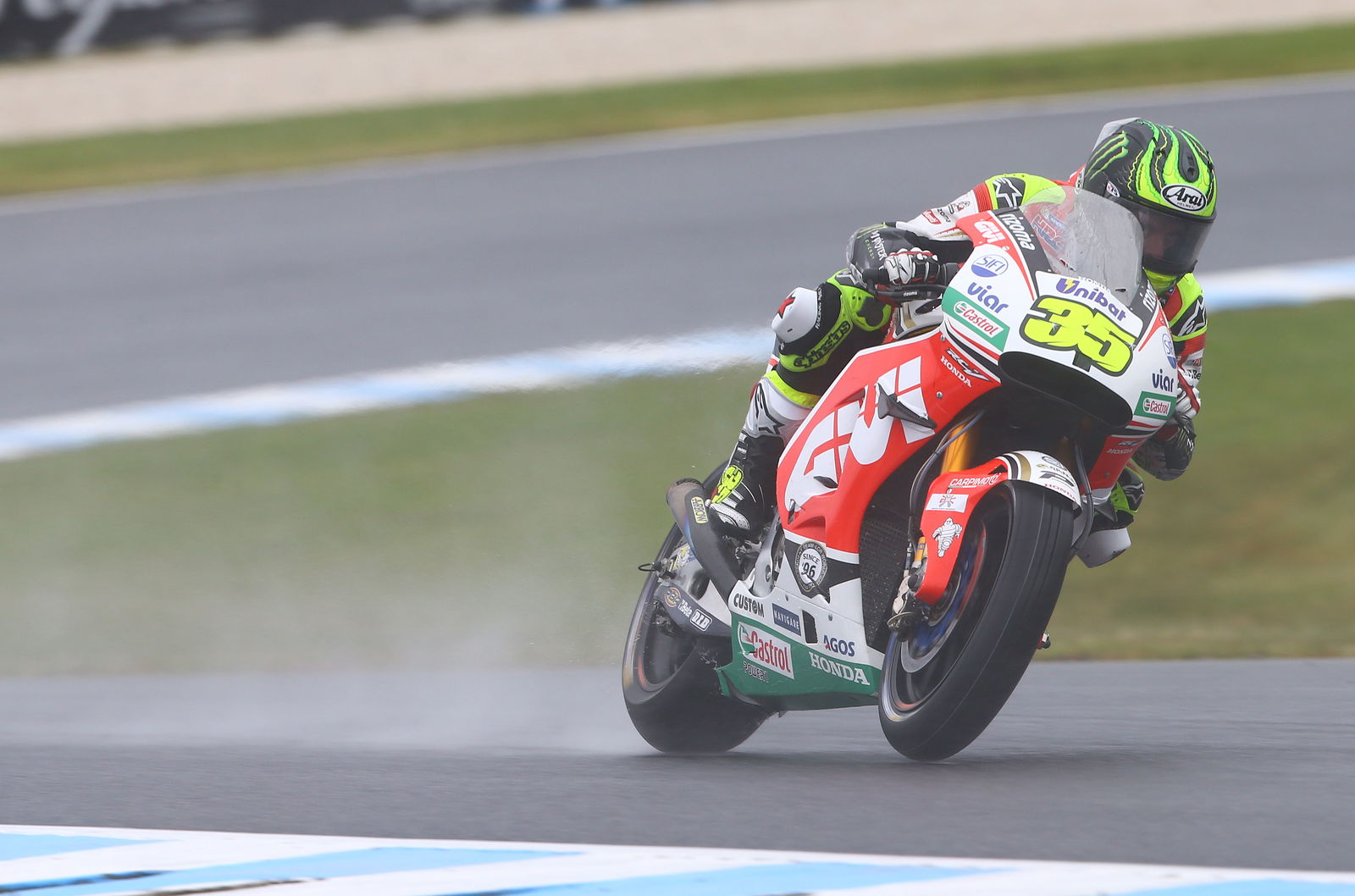MotoGP Australia: Michelin defends wet tyre allocation

Nicolas Goubert has explained the reasoning behind Michelin's tyre allocation for the Australian Grand Prix, and feels the inclusion of an extra soft front wet was brought for exceptional conditions, like those experienced on Friday.
Michelin had warned riders not to complete more than ten laps on the extra soft front - the same compound used by Andrea Iannone in the wet Brno race that showed serious wear -, a "very careful" policy to ensure a similar incident did not reoccur.
Valentino Rossi was one of several riders to use the tyre in cold, wet conditions in FP1 and fell victim to Michelin's warning. The Italian miscalculated the number of laps in his run, and subsequently saw his times from that stint cancelled.
The French tyre firm's decision to include this tyre when it would not be a viable race option in 'normal' temperatures drew criticism from Cal Crutchlow, but Goubert believes Friday's exceptional conditions - that featured temperatures in the single figures - vindicated Michelin's decision.
"[We included it] For a situation like this one. The super soft is more grippy than the normal one. You're likely to get colder weather in the morning like we do with the slicks.
"We bring three or four front slicks. One of them is a soft one. Normally they know that they're not going to use it in the race, for sure. But they can use it at the beginning of the session because it gives you more feeling.
Responding to Crutchlow's comments, that stated there is no value in including a tyre in the allocation that cannot run race distance, he continued, "I don't agree with that.
"It's the same as I said for the slicks. A lot of guys say to us we will use the soft slicks only for the first ten laps on Friday, Saturday or Sunday morning. But we will not use it in the race. After it depends rider to rider. Some of them don't mind using something different. Others, like Cal, do mind."
Goubert went on to explain the extra soft front could complete 30 laps - a view shared by Rossi - if conditions were similar to Friday, a day in which FP2 was cancelled due to incessant, driving rain and near-icy temperatures.
However, due to the tyre's history, and several riders' experiences in the race at Brno, a cautious approach was the best means of working toward a safe race.
"The thing is if the conditions stay as they were this morning for sure you can do 30 laps. But the situation is with the single tyre maker rule and the habits which they take, either you bring tyres which can do a full race distance or a given number of laps and you tell them and put that in the regulation, or you don't do everything."
Should conditions on Saturday and Sunday mirror those of the first day of free practice
"We will see what happens tomorrow. We will look at the tyres. I don't think we'll do it here because of the different tyres. And anyway, it's very difficult to forecast what the weather is going to be.
"This track is not demanding on the front. But now we're being very careful with what happened in Brno. I think we have to [be]!"
The French tyre firm's dry tyre allocation also errs on the side of caution, with low, spring temperatures very much in mind.
The time slot allocated to Sunday's race - 16.00, when track temperatures are known to begin decreasing - has also been considered, with Goubert explaining the February test at the seaside track helping to guide Michelin toward an appropriate front compound.
"I would say that we brought specific tyres for low temperatures and I hope we'll have time to test them properly [laughs]. They're made for a low ground temperature.
"Whether they will work or not, I mean, we're lacking in experience. I hope we'll get some dry time tomorrow. It doesn't look like that. Or in the warm up on Sunday morning. We were lucky enough to have a warning when we came here in February.
"On the last half a day all of a sudden the temperature went down quite drastically. We saw straight away the effect it had on the front. We came with something made for a lot lower temperature."
